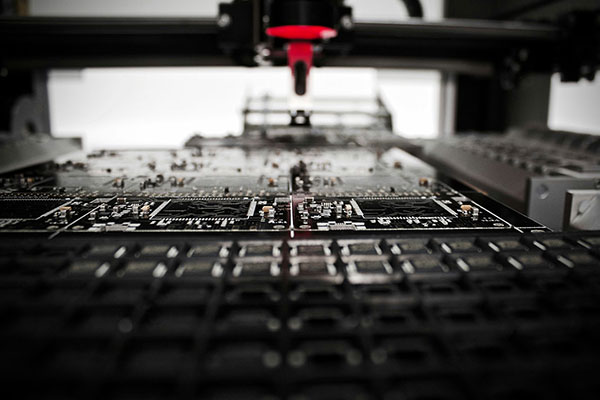Early adopters of AI and robotics in manufacturing gain efficiency and cost cuts. A $20.8B market means modernize or fall behind.
The manufacturing industry finds itself on the cusp of transformation as artificial intelligence (AI) and automation usher in a new era of optimization. Early adopters of AI-powered analytics, machine learning (ML), robotic process automation and collaborative visibility platforms have already boosted efficiency, reduced costs and enriched decision-making.
Their success stories have captured attention, with experts predicting a nearly $20.8 billion market projection for AI manufacturing solutions by 2028. Yet, current adoption hovers under 20%, signaling an upcoming divide between the companies embracing intelligent systems and those needing to modernize.
Organizations failing to invest in this innovation now will face skyrocketing expenses and plummeting productivity. Leaders must begin their journey immediately or risk falling behind the competition.
The widespread industry labor shortage impacts 82% of companies and is projected to grow to 2.1 million unfilled jobs by 2030, indicating that hiring and retaining qualified workers is a major challenge. As data volume and complexity grow, automation and intelligent systems have become indispensable for meeting expected capacity amid tight labor market conditions. However, simply automating tasks is no longer enough to stay competitive. Companies must leverage AI and advanced analytics to unlock the power of their data.
Integrating siloed systems provides end-to-end visibility across the value chain. With consolidated data, AI algorithms can uncover hidden insights and patterns to optimize decision-making. Predictive analytics empower teams to anticipate future demands and supply chain fluctuations.
While recruitment relieves immediate workforce gaps, forward-thinking leaders pursue long-term solutions — data-fueled, self-learning systems like collaborative visibility platforms offering:
With comprehensive visibility and AI-enabled analytics, manufacturers can dynamically match production with demand signals, optimize logistics, reduce waste and enhance productivity.
AI implementation presents challenges, including integration difficulties in fragmented IT environments, high initial investments, inadequate data infrastructure and lack of trust in ML recommendations. Manufacturers pursuing an incremental approach while laying a sturdy data foundation will find the most success. Starting with pilot programs and openness to continued tweaking enables algorithms to learn nuances of specific product lines and customer variables.

Manufacturers must integrate innovation seamlessly across their operations to navigate current challenges and future disruptions. Intelligent systems produce game-changing benefits throughout the entire manufacturing process, including:
Leaders should leverage data and AI to inform smarter real-time decisions across the manufacturing ecosystem. Once data visibility and predictive capabilities are implemented, robotics and autonomous technology can further amplify operational excellence.
While analytics and optimization offer many immediate returns, the long-term priority should be data consolidation. Integrating siloed systems and mismatching datasets is challenging, but doing so allows manufacturers to gain end-to-end visibility across the value chain. Paired with AI’s capabilities, teams can access a single source of truth when making supply chain decisions.
Collaborative data platforms are a great way to streamline data consolidation because they facilitate seamless integration and communication between diverse systems, ensuring a cohesive and unified approach to information management. These platforms also connect retailers and manufacturers: retailers provide visibility into real-time point-of-sale data, inventory needs and delivery requirements, while manufacturers gain insights to align production planning and logistics.
Improved communication ensures effective and efficient inventory management, which is very attractive to potential hires. Gen Z will comprise one-third of the workforce by 2030, and of this generation, 80% aspire to work with cutting-edge technology like AI. Embracing innovative solutions aids recruitment and retention. Optimizing the most grueling tasks and processes allows employees to focus on higher-value oversight like anomaly detection and preventative care rather than repetitive heavy lifting.
With increasingly thin margins and ongoing market turbulence, data is an asset. Long-term gains in efficiency and performance significantly outweigh the initial heavy lift of technological integration. 2024 will be the year that further illuminates the necessity of AI and other cutting-edge technologies in operational resilience.

About the Author
Padhu Raman is the co-founder and Chief Executive Officer of Osa Commerce, an innovative supply chain technology provider for brands, retailers, and the third and fourth-party logistics (3PLs and 4PLs) that support them. He has two decades of experience building technology for enterprise retail, including order and warehouse management and unified commerce platforms.
Scott Ellyson, CEO of East West Manufacturing, brings decades of global manufacturing and supply chain leadership to the conversation. In this episode, he shares practical insights on scaling operations, navigating complexity, and building resilient manufacturing networks in an increasingly connected world.